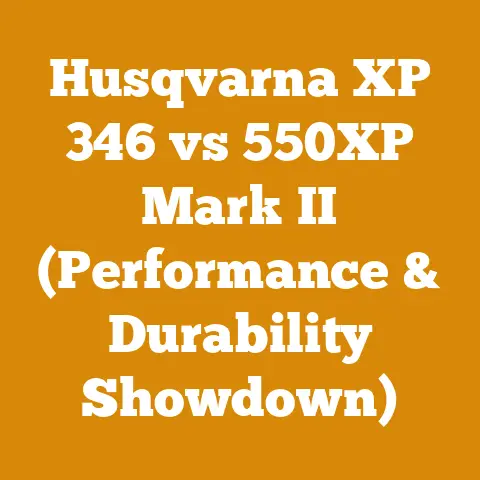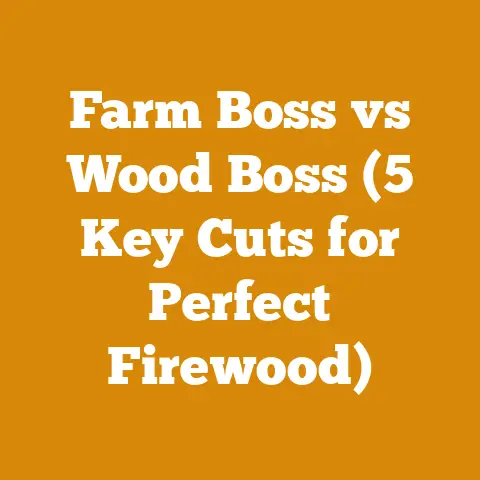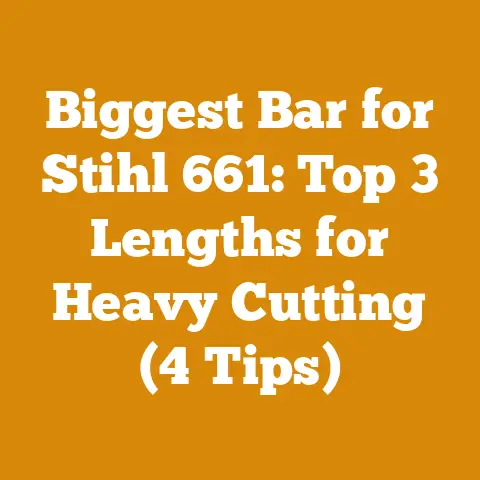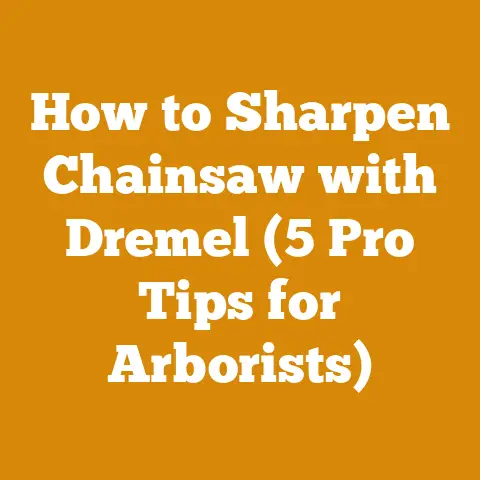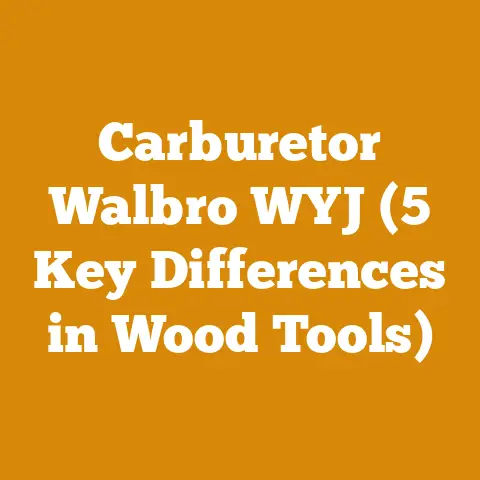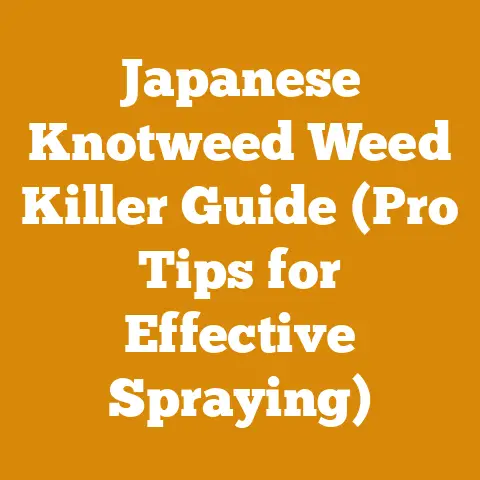Burlap Sack for Trees: Leave On or Remove? (Tree Planting Debate)
Okay, let’s dive deep into the age-old question that plagues many a tree planter, from the novice backyard enthusiast to the seasoned professional: Burlap Sack for Trees: Leave On or Remove?
As someone who’s spent a good chunk of my life with sawdust in my boots and the scent of freshly cut wood clinging to my clothes, I’ve seen firsthand the debates, the triumphs, and the occasional hilarious mishaps that come with planting trees. This isn’t just about gardening; it’s about understanding the life cycle of a tree, respecting the environment, and, let’s be honest, saving ourselves some unnecessary backache.
So, let’s grab our shovels, put on our thinking caps, and get ready to dig into the nitty-gritty of burlap and root balls. By the end of this, you’ll be armed with the knowledge to make the best decision for your trees, your time, and maybe even your sanity.
Expert Picks at a Glance: To Cut or Not to Cut?
Before we plunge into the details, let’s cut to the chase. Here are the expert opinions I’ve gathered over years of discussions with arborists, nursery owners, and fellow wood nerds:
- Generally Remove: The consensus leans heavily toward removing as much of the burlap as possible. The burlap’s natural decomposition process can be slow, and it can hinder root growth, especially in heavy clay soils.
- Partial Removal (Strategic Cuts): In some cases, partial removal is acceptable. This involves cutting away the top portion of the burlap and slitting the sides to allow roots to escape. This is a compromise for situations where complete removal is too difficult or risky.
- Consider the Burlap Type: Natural burlap is more biodegradable than treated burlap. If you’re certain it’s untreated and will decompose relatively quickly, leaving some on the bottom might be less of a problem.
- Soil Type Matters: In well-draining, sandy soils, the impact of leaving burlap on is generally less severe than in compacted clay soils.
- Root Health is Paramount: Always prioritize the health of the roots. If removing the burlap risks damaging the root ball, a partial removal is the safer option.
Key Takeaways Up Front
- Root Growth is King: The primary goal is to facilitate healthy root growth. Burlap, if left intact, can impede this.
- Burlap Isn’t Always Your Friend: While it serves a purpose in transporting trees, it’s not necessarily beneficial long-term.
- Assess the Situation: Consider the type of burlap, soil conditions, and the health of the root ball before making a decision.
- Err on the Side of Caution: If in doubt, remove as much burlap as possible without damaging the roots.
- Don’t Bury the Crown: Ensure the top of the root ball is level with or slightly above the surrounding soil.
The Great Burlap Debate: A Deep Dive
Why Burlap in the First Place?
Burlap, typically made from jute or hemp fibers, serves a crucial purpose: protecting the root ball of a tree during transportation from the nursery to your planting site. Without it, the delicate root system would dry out, break apart, and leave the tree vulnerable to transplant shock. Think of it as a protective blanket for the roots, keeping them snug and moist during their journey.
The use of burlap is a common practice, and it’s been around for ages. Nurseries rely on it because it’s relatively inexpensive, provides good protection, and is easy to handle. But here’s the rub: what’s good for transport isn’t always good for long-term growth.
The Arguments for Removing Burlap
Now, let’s get to the heart of the matter. Why are so many experts advocating for the removal of burlap? Here’s a breakdown of the key arguments:
- Impeded Root Growth: This is the big one. Burlap, even natural burlap, can act as a physical barrier to root growth. Imagine trying to push your way through a tightly woven fabric – that’s what your tree’s roots are up against. While burlap will eventually decompose, it can take years, especially in drier or compacted soils. By that time, the roots may have become girdled (wrapped around themselves), leading to long-term health problems and potentially even the death of the tree.
- Slow Decomposition: As I mentioned, burlap’s decomposition rate varies significantly depending on soil conditions, moisture levels, and the type of burlap. Treated burlap, which is often coated with chemicals to prevent rot during transport, decomposes even slower. I’ve seen instances where burlap remained largely intact after several years in the ground.
- Girdling Roots: If the burlap doesn’t decompose quickly enough, it can constrict the roots as they grow thicker, leading to girdling. Girdling roots essentially choke the tree, preventing it from absorbing water and nutrients properly. This can manifest as stunted growth, yellowing leaves, and dieback of branches.
- Waterlogging: In poorly drained soils, burlap can act like a wick, drawing water away from the root ball and creating a waterlogged environment. This can lead to root rot, a serious fungal disease that can kill a tree.
- Chemical Treatments: Some burlap is treated with chemicals to prevent mold and mildew during shipping. These chemicals can potentially leach into the soil and harm the tree or surrounding plants. While the specific chemicals used vary, it’s always best to err on the side of caution.
The Arguments for Leaving Burlap On (With Caveats)
Okay, so why do some people argue for leaving the burlap on, at least partially? Here are the main reasons, along with my take on them:
- Ease of Planting: Let’s be honest, removing burlap can be a pain. It’s often tightly wrapped, and you risk damaging the root ball in the process. Leaving it on seems like a quick and easy solution. However, this short-term convenience can lead to long-term problems.
- Root Ball Stability: The burlap helps hold the root ball together, especially when planting bare-root trees or trees with fragile root systems. However, this is primarily a concern during the initial planting phase. Once the tree is in the ground and the roots start to establish, the burlap is no longer necessary for stability.
- Protection from Pests: Some argue that burlap can provide a barrier against certain soil-borne pests. However, this benefit is minimal compared to the potential drawbacks of impeded root growth.
- Biodegradability (Natural Burlap): The argument here is that natural burlap will eventually decompose and won’t cause any harm. While this is true to some extent, the decomposition process can be slow, and the burlap can still impede root growth in the meantime.
My Personal Experience: A Cautionary Tale
I remember one particular incident vividly. Years ago, I helped a friend plant a beautiful Japanese maple in his backyard. We were in a rush and, against my better judgment, decided to leave the burlap on the root ball. “It’ll decompose,” we reasoned. “No big deal.”
Fast forward a few years, and the maple was struggling. It wasn’t growing as expected, and the leaves were starting to yellow. We dug around the base of the tree and, to our horror, found the burlap still largely intact, constricting the roots like a medieval torture device. We carefully removed the burlap, but the damage was done. The tree never fully recovered and eventually died a few years later.
That experience taught me a valuable lesson: never underestimate the power of burlap to wreak havoc on a tree’s root system.
The Burlap Breakdown: Types and Considerations
Not all burlap is created equal. Understanding the different types of burlap and their properties is crucial for making informed decisions about whether to remove them.
- Natural Burlap: This is the most common type of burlap, made from natural fibers like jute or hemp. It’s generally considered biodegradable, but the decomposition rate can vary depending on soil conditions.
- Treated Burlap: This type of burlap is treated with chemicals to prevent rot and mildew during shipping. The chemicals can slow down decomposition and potentially leach into the soil. Treated burlap is often darker in color and has a slightly oily feel.
- Synthetic Burlap: This is a less common type of burlap made from synthetic materials like polypropylene. It’s not biodegradable and should always be removed before planting.
How to Identify the Type of Burlap:
- Look for a Label: Some nurseries will label the type of burlap used.
- Check the Color: Treated burlap is often darker in color than natural burlap.
- Feel the Texture: Treated burlap may have a slightly oily feel.
- Perform a Burn Test: Carefully burn a small piece of the burlap in a safe location. Natural burlap will burn relatively easily, while synthetic burlap will melt and produce a plastic-like odor.
The Planting Process: Burlap Removal Techniques
Okay, let’s get practical. Here’s a step-by-step guide on how to remove burlap from a tree’s root ball, minimizing the risk of damage:
- Prepare the Planting Hole: Dig a hole that’s twice as wide as the root ball and just as deep. This will give the roots plenty of room to spread out.
- Carefully Place the Tree: Gently lower the tree into the hole.
- Assess the Burlap: Examine the burlap to determine its type and condition. If it’s natural burlap and seems to be decomposing readily, you might consider leaving the bottom portion intact. However, if it’s treated or synthetic burlap, or if it’s tightly wrapped, you’ll need to remove it.
- Cut the Twine or Wire: Use a sharp knife or wire cutters to remove any twine or wire holding the burlap in place. Be careful not to cut into the root ball.
- Remove the Top Portion of the Burlap: Carefully peel back the top portion of the burlap, exposing the top of the root ball.
- Slit the Sides of the Burlap: Use a sharp knife to make several vertical slits in the sides of the burlap. This will allow the roots to escape more easily.
- Gently Remove the Burlap: Carefully pull the burlap away from the root ball, working your way around the tree. If the burlap is stuck, use a knife to cut it away.
- Inspect the Roots: Once the burlap is removed, inspect the roots for any signs of girdling or damage. If you find any girdling roots, carefully prune them away with sharp pruners.
- Backfill the Hole: Backfill the hole with soil, gently tamping it down around the root ball.
- Water Thoroughly: Water the tree thoroughly to help settle the soil and encourage root growth.
- Mulch: Apply a layer of mulch around the base of the tree, keeping it away from the trunk.
Important Considerations:
- Work Carefully: The key is to be gentle and patient. Don’t try to force the burlap off, as this can damage the roots.
- Use Sharp Tools: A sharp knife or wire cutters will make the job much easier and reduce the risk of injury.
- Consider the Root Ball’s Condition: If the root ball is very fragile, you may want to leave some of the burlap on the bottom for support.
- Don’t Be Afraid to Ask for Help: If you’re unsure about any part of the process, consult with a local arborist or nursery professional.
Soil Types and Burlap: A Crucial Connection
The type of soil you’re planting in plays a significant role in how burlap impacts root growth.
- Well-Draining Soils (Sandy Loam): In well-draining soils, the burlap is less likely to cause waterlogging or root rot. However, it can still impede root growth, so removal is generally recommended.
- Poorly Draining Soils (Clay): In clay soils, the burlap can exacerbate drainage problems, leading to waterlogging and root rot. Removal is even more critical in these situations. Consider amending the soil with organic matter to improve drainage before planting.
- Compacted Soils: Compacted soils restrict root growth, and the burlap can further compound this problem. Loosen the soil around the planting hole before planting and remove the burlap entirely.
Addressing Common Concerns
Let’s tackle some frequently asked questions and concerns about burlap and tree planting:
- “I’m worried about damaging the root ball if I remove the burlap.” This is a valid concern. However, with careful technique and sharp tools, you can minimize the risk of damage. If the root ball is very fragile, consider leaving some of the burlap on the bottom for support.
- “I don’t have time to remove the burlap. Can I just plant the tree as is?” While it might seem tempting, this is generally not a good idea. The long-term consequences of leaving the burlap on can outweigh the short-term convenience.
- “The burlap is already starting to decompose. Can I leave it on?” Even if the burlap is starting to decompose, it can still impede root growth. It’s best to remove as much as possible.
- “I’m planting a large tree. Is it okay to leave the burlap on the bottom for support?” In the case of very large trees, leaving some of the burlap on the bottom for support might be necessary. However, make sure to remove the top portion of the burlap and slit the sides to allow the roots to escape.
- “What about using burlap as mulch?” Burlap can be used as mulch, but it’s not the best option. It doesn’t decompose as quickly as other mulches, and it can become matted down, preventing water from reaching the soil.
Industry Insights and Case Studies
I’ve spoken with several arborists and nursery owners about their experiences with burlap and tree planting. Here are some key takeaways from those conversations:
- “We always recommend removing as much burlap as possible,” says John, a certified arborist with over 20 years of experience. “The benefits of removing it far outweigh the risks.”
- “We’ve seen countless cases of trees struggling because the burlap was left on,” says Sarah, the owner of a local nursery. “It’s just not worth the risk.”
- “The type of burlap makes a big difference,” says Mark, a tree farmer. “We’ve switched to using natural burlap that decomposes more quickly, but we still recommend removing it.”
Case Study: A local park planted several new trees a few years ago. Half of the trees had the burlap removed before planting, while the other half had the burlap left on. After three years, the trees with the burlap removed were significantly larger and healthier than the trees with the burlap left on.
Beyond Burlap: Alternative Root Ball Wrappings
While burlap is the most common material used for wrapping root balls, there are other alternatives available:
- Biodegradable Pots: Some nurseries use biodegradable pots made from materials like coconut coir or peat moss. These pots can be planted directly into the ground, and they will eventually decompose.
- Wire Baskets: Wire baskets are sometimes used to provide additional support for the root ball. These baskets should always be removed before planting.
- No Wrapping: Some nurseries are starting to sell trees with bare roots, meaning the roots are not wrapped in any material. This eliminates the need to worry about burlap removal.
Final Thoughts: Rooted in Success
The question of whether to leave burlap on or remove it when planting trees is a complex one with no easy answer. However, based on my experience and the advice of experts, I firmly believe that removing as much burlap as possible is generally the best course of action.
While it might require a bit more effort upfront, the long-term benefits of healthy root growth far outweigh the short-term convenience of leaving the burlap on. Remember to assess the situation carefully, consider the type of burlap, soil conditions, and the health of the root ball before making a decision. And when in doubt, err on the side of caution and remove as much burlap as possible.
Planting a tree is an investment in the future. By taking the time to do it right, you can ensure that your tree thrives for years to come. So, grab your shovel, get your hands dirty, and plant with confidence!
Actionable Next Steps:
- Assess Your Soil: Determine the type of soil you’re planting in and amend it as needed to improve drainage.
- Inspect the Burlap: Identify the type of burlap used on your tree and determine whether it needs to be removed.
- Remove the Burlap Carefully: Follow the steps outlined above to remove the burlap without damaging the roots.
- Monitor Your Tree: Keep an eye on your tree for any signs of stress or disease.
Happy planting, and may your trees grow tall and strong!

